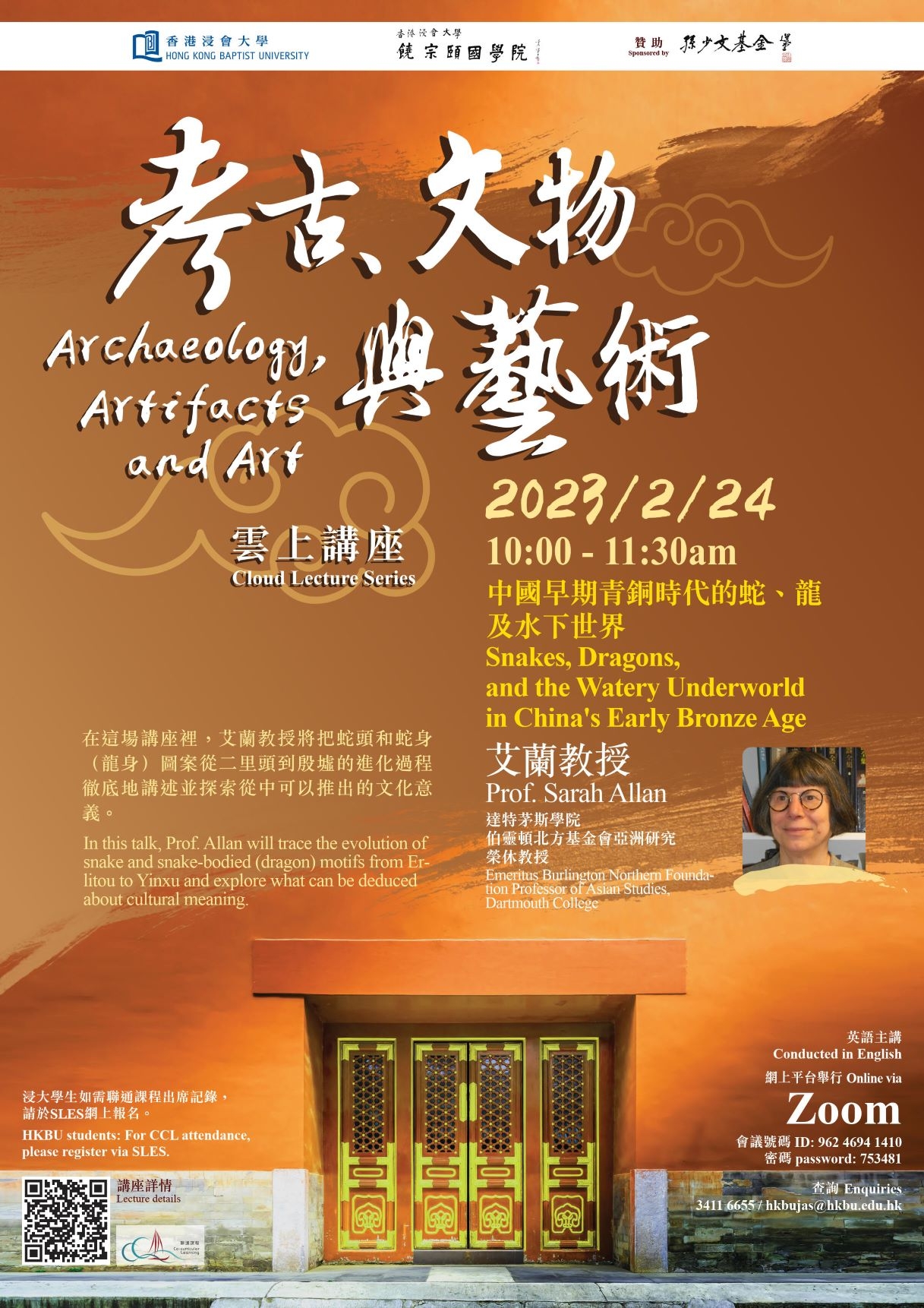
Sponsored by Simon Suen Foundation, the “Archaeology, Artifacts and Art” Cloud Lecture Series will be held from November 2022 to August 2023. The Academy will curate a series of lectures on archaeology, history, artifacts and art in collaboration with experts and scholars locally and abroad, including esteemed researchers art collectors as well as connoisseurs. With the splendor of the pantheon, we endeavor to embark on a journey of discovery with international academics and students from different backgrounds.
No registration is required for this lecture series. All are welcome to attend each lecture with the following Zoom meeting details:
https://hkbu.zoom.us/j/96246941410?pwd=ZHg0ZnFBbGMxczFXNzBFYnVHZS8zZz09
Zoom Meeting ID: 962 4694 1410
Password:753481
HKBU students: For CCL attendance, please (1)register via SLES before the activity, (2) log in Zoom using HKBU email account, with your name as “STUDENT ID NO. + NAME”, and (3) complete and submit the Co‐curricular Learning Evaluation Forms after the activity in 3 working days.
Note: A CCL-recognized event must be at least 1.5 hours long. Please observe the requirements if students wish to update the attendance record.
Fourth Lecture: Snakes, Dragons, and the Watery Underworld in China's Early Bronze Age
Date: 24 February 2023, Friday
Time: 10:00–11:30 (Hong Kong Time)
Speaker: Prof. Sarah Allan (Emeritus Burlington Northern Foundation Professor of Asian Studies, Dartmouth College)
Language: English
Abstract: In this talk, Prof. Allan will trace the evolution of snake and snake-bodied (dragon) motifs from Erlitou to Yinxu and explore what can be deduced about cultural meaning. Snakes have been shown to cause a neurophysiological reaction of fear in all higher primates and we will argue that ancient China shared the common association of snakes with death and feelings of religious awe. More specifically, snakes were associated with a watery underworld in a three tiered-cosmos of water, earth, and sky. At Erlitou, snakes and snake-bodied creatures have diamond backs and human-shaped eyes. The diamond back and unusual depiction of the nose identify them with the Deinagkistrodon, known in Chinese as the “five or one hundred-step snake” because of the potency of its poison. The alternative is a banded-back (represented as a shield pattern) and round eyes. These two types of bodies and eyes remain conventional for snake and dragon motifs through the Yinxu period. In the transitional period between the Erligang and Yinxu (ca. 1350-1250 B.C.E.), some snake-bodied creatures with animal-like heads acquire bird-legs. This addition is probably related to the myth of suns that fly across the sky as birds in the day and traverse the underworld as dragons at night.
Speaker Bio:
Sarah Allan (艾蘭) has a B.A. from UCLA and Ph.D. from the University of California. She is Emeritus Burlington Northern Foundation Professor of Asian Studies, Dartmouth College, a Visiting Scholar at the University of California at Berkeley, and a Distinguished Visiting Professor at Tsinghua University, as well as Chair of the Society for the Study of Early China and Editor of the journal, Early China (2010-2022). Her books include: The Heir and the Sage:Dynastic Legend in Early China, The Shape of the Turtle: Myth, Art and Cosmos in Early China, The Way of Water and Sprouts of Virtue, and Buried Ideas: Legends of Abdication and Ideal Government in Early Chinese Bamboo Manuscripts. These books and much of her other work have been published in Ai Lan Wenji 艾蘭文集published by Shangwu Yinshuguan 商務印書館.
Webinar Video
YouTube
Bilibili